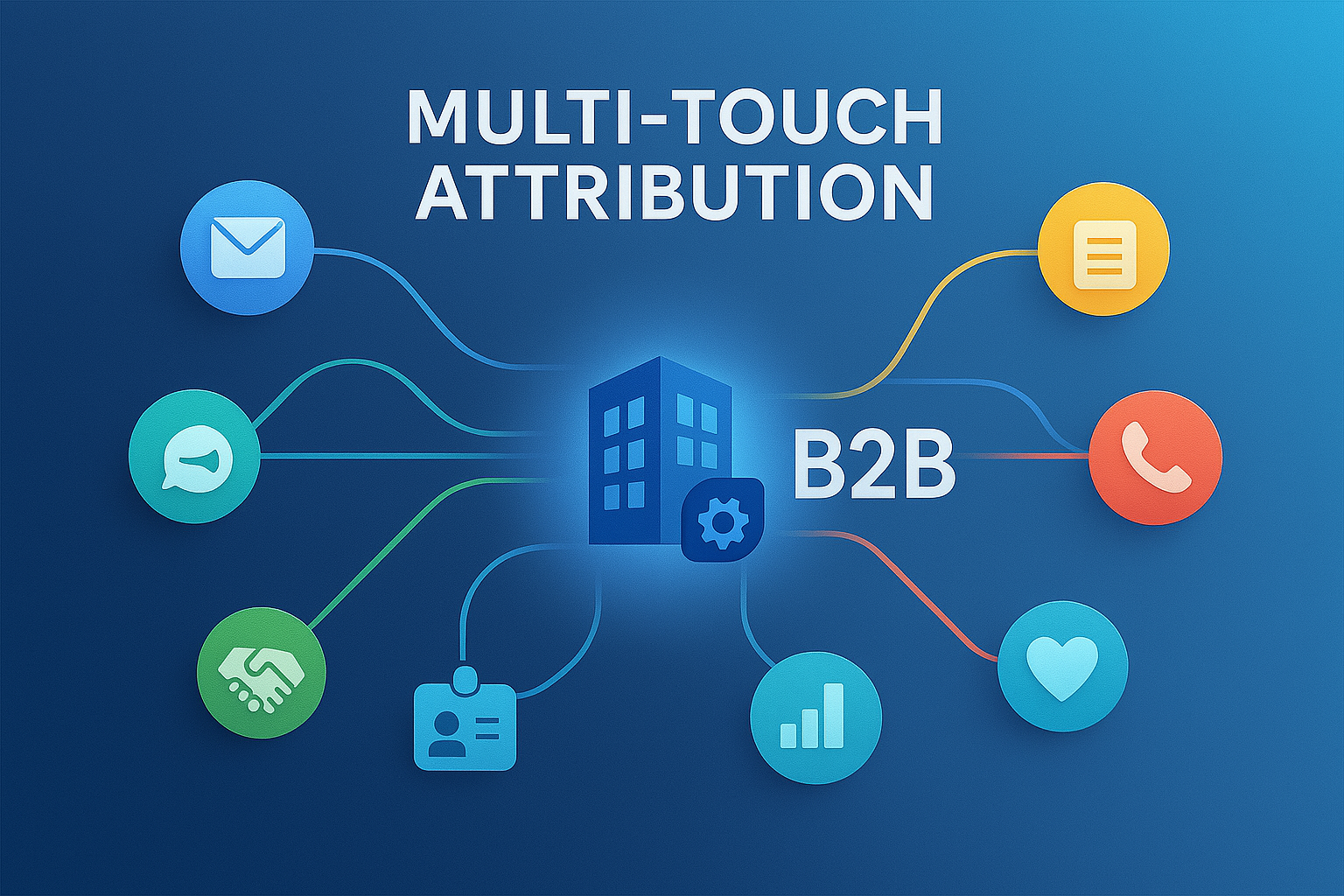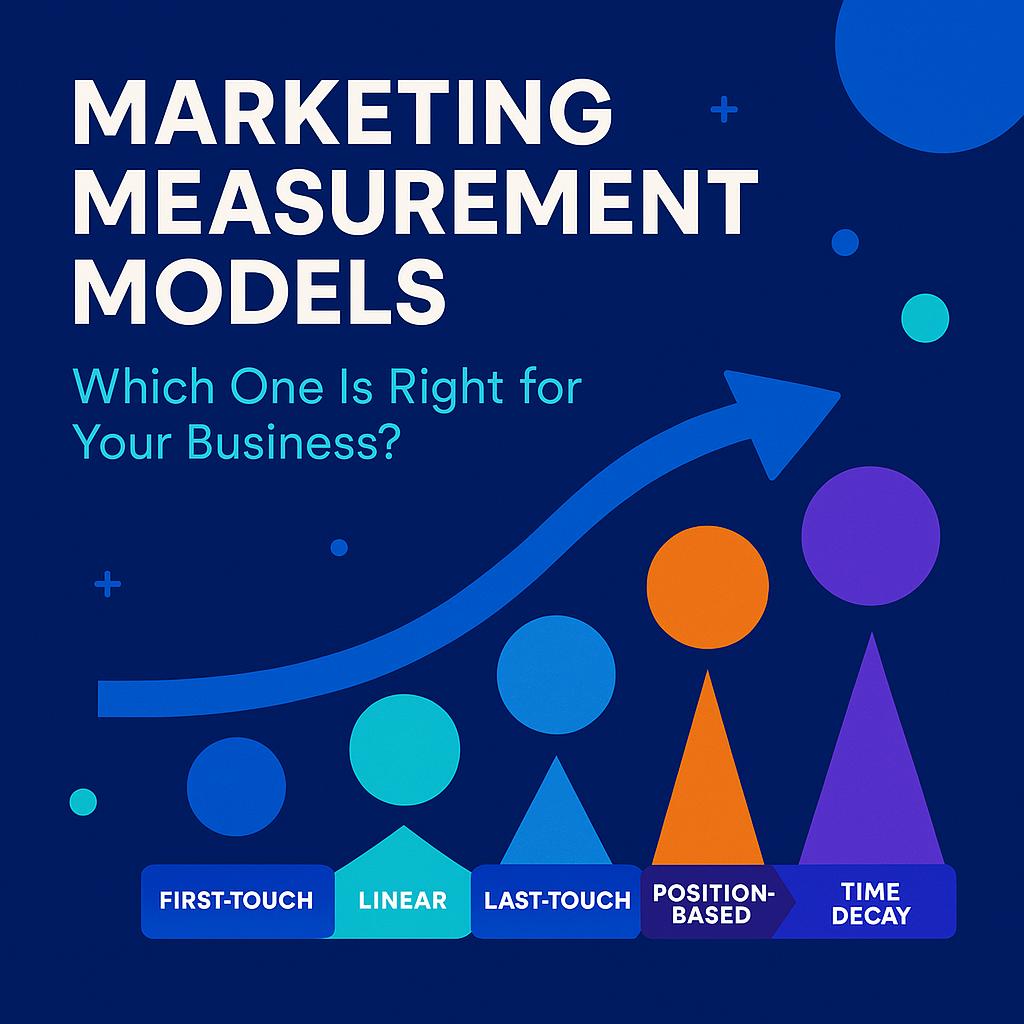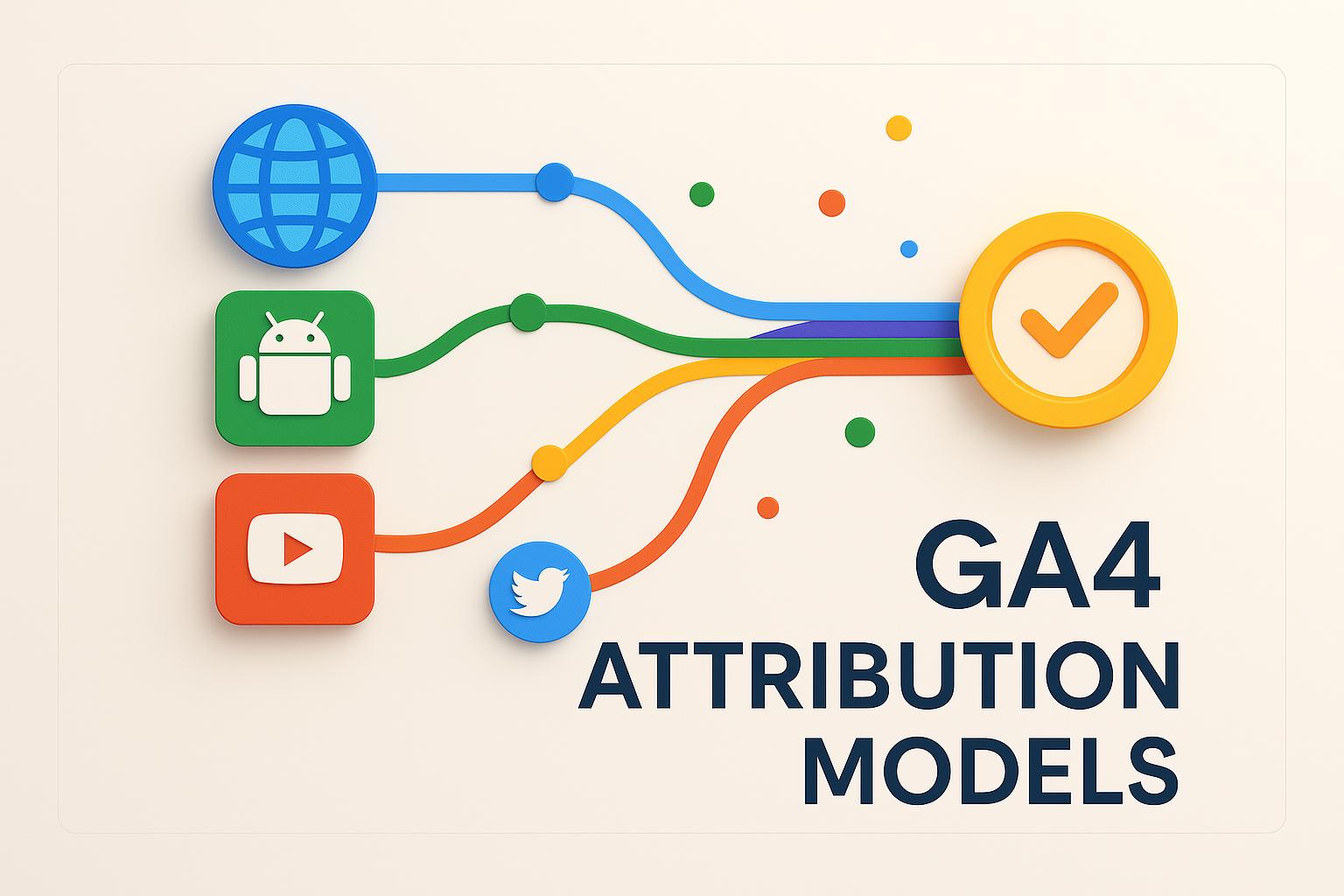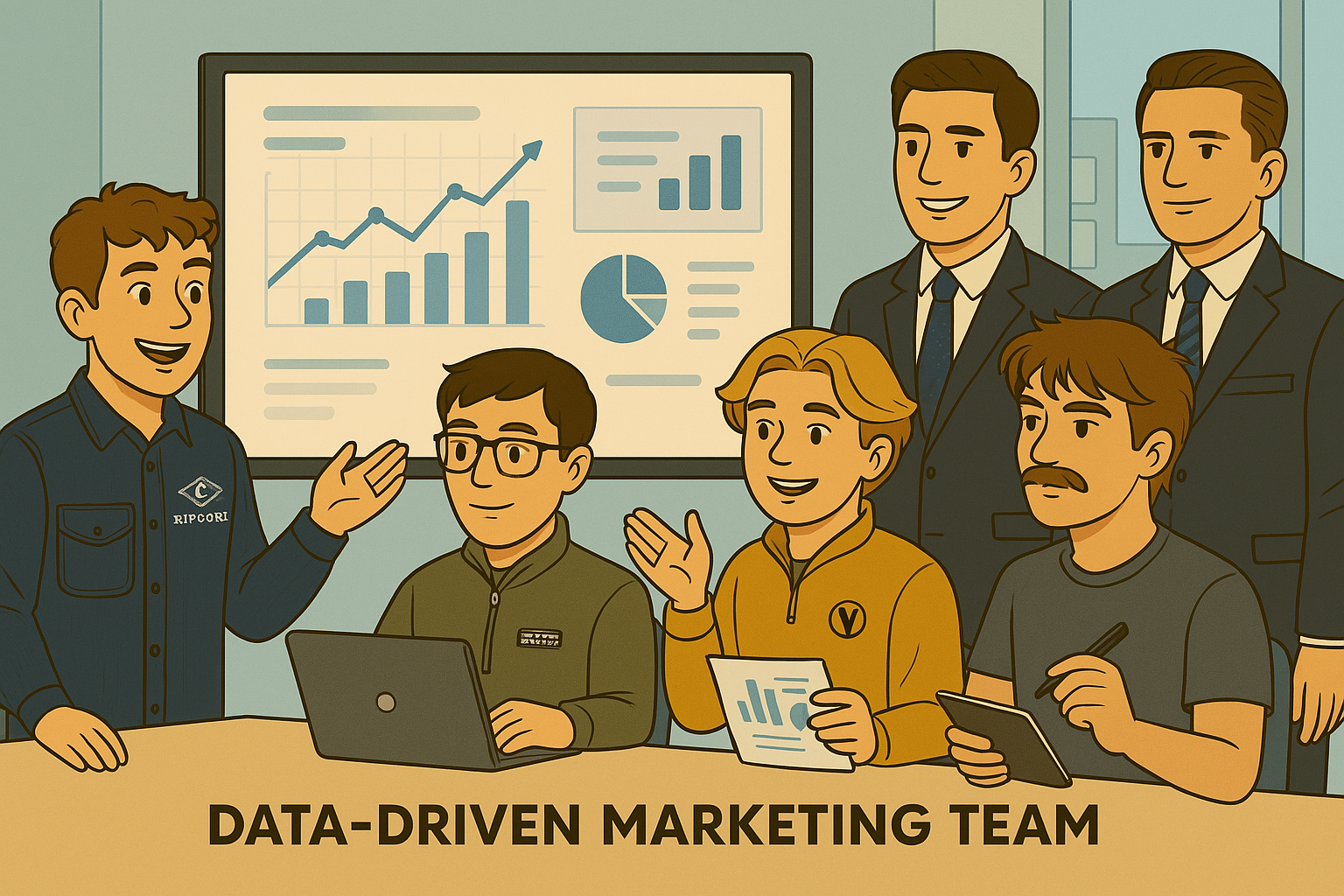In the B2B world, purchase decisions rarely happen after a single interaction. Prospects may encounter dozens of touchpoints across multiple channels, spanning weeks or months before converting. Last-touch attribution—still surprisingly common in B2B organizations—fails to capture this complexity, potentially leading to misallocated budgets and missed opportunities. Here's why multi-touch attribution matters for B2B, and how to make the case for it in your organization.
The B2B Attribution Challenge
B2B marketing attribution is inherently more complex than B2C for several reasons that make single-touch models inadequate:
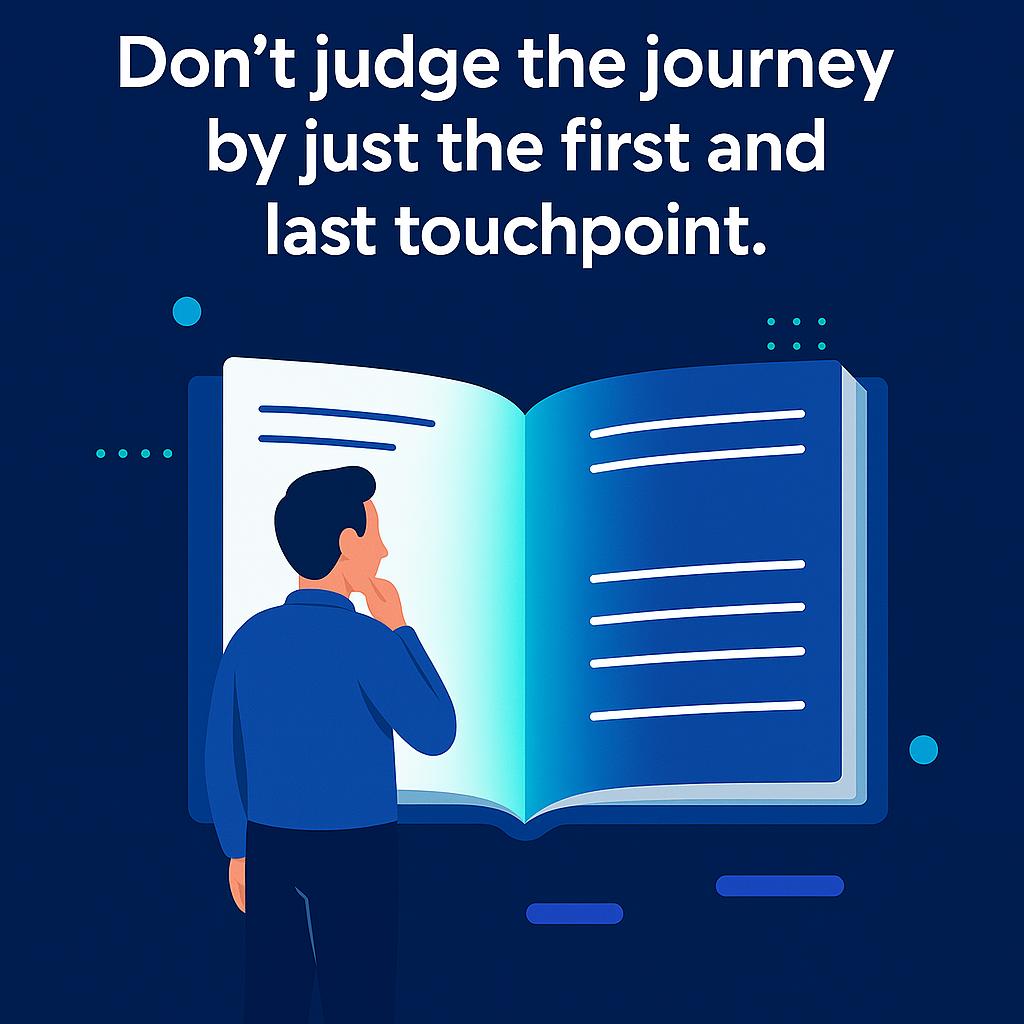
Crediting only the first or last touchpoint in a B2B purchase journey is like judging a book by only reading the first and last pages.
Problems with Single-Touch Attribution in B2B
Relying on first-touch or last-touch attribution in B2B marketing creates several significant problems:
Biased Budget Allocation
Single-touch models invariably overvalue either top-of-funnel or bottom-of-funnel activities, leading to skewed investment in those areas at the expense of crucial mid-funnel engagements.
Misaligned Team Incentives
When credit only goes to one touchpoint, teams naturally focus on optimizing for that specific moment rather than collaborating to improve the entire customer journey.
Incomplete Customer Journey Understanding
Without visibility into how prospects move through the funnel, B2B marketers miss critical insights about content effectiveness, channel synergies, and engagement patterns.
ROI Calculation Errors
Inaccurate attribution leads to misleading ROI calculations, potentially cutting budgets for channels and activities that actually drive significant value.
The Business Case for Multi-Touch Attribution
When advocating for multi-touch attribution in your organization, focus on these tangible benefits:
More Effective Budget Allocation
Multi-touch attribution helps identify undervalued channels that contribute significantly to conversions, allowing for more strategic budget allocation based on actual impact rather than misleading metrics.
// Simple example showing how attribution impacts budgeting
const channelPerformance = {
// Last-touch attribution view
lastTouch: {
paid_search: { spend: 50000, conversions: 120, cpa: 417 },
content: { spend: 35000, conversions: 20, cpa: 1750 },
events: { spend: 75000, conversions: 40, cpa: 1875 },
email: { spend: 15000, conversions: 180, cpa: 83 }
},
// Multi-touch attribution view
multiTouch: {
paid_search: { spend: 50000, conversions: 70, cpa: 714 },
content: { spend: 35000, conversions: 85, cpa: 412 },
events: { spend: 75000, conversions: 95, cpa: 789 },
email: { spend: 15000, conversions: 110, cpa: 136 }
}
};Better Cross-Team Collaboration
When all channels receive appropriate credit, marketing teams are incentivized to work together rather than compete for attribution. This leads to more cohesive strategies and better overall customer experiences.
Improved Customer Journey Insights
Multi-touch attribution reveals patterns in successful customer journeys, helping marketers identify the most effective sequences of touchpoints and optimize the path to conversion.
More Accurate Forecasting
With a more complete view of how marketing activities contribute to pipeline and revenue, forecasting becomes more reliable, allowing for more confident planning and investment.
In complex B2B sales cycles, the question isn't whether multi-touch attribution is valuable—it's whether you can afford the misallocated resources and missed opportunities that come from not having it.
Multi-Touch Attribution Models for B2B
Several multi-touch attribution models can be applied to B2B marketing, each with different approaches to distributing credit:
Linear Attribution
Gives equal credit to every touchpoint in the customer journey. Simple to implement but doesn't reflect the varying importance of different interactions.
Time Decay Attribution
Assigns more credit to touchpoints closer to conversion. Particularly relevant for B2B where recent interactions often have higher influence in the final decision stage.
U-Shaped (Position-Based) Attribution
Gives 40% credit each to the first and last touches, with the remaining 20% distributed among middle touchpoints. Recognizes the importance of both discovery and decision moments.
W-Shaped Attribution
Assigns 30% credit each to three key milestones: first touch, lead creation, and opportunity creation, with the remaining 10% distributed among other touchpoints. Well-suited to longer B2B sales cycles with distinct stages.
Custom or Algorithmic Attribution
Uses machine learning or custom weighting based on your specific business model and historical data patterns. Provides the most accurate assessment but requires more sophisticated implementation.
Implementation Strategies for B2B Organizations
Implementing multi-touch attribution in B2B doesn't have to be overwhelming. Here's a phased approach to get started:
Phase 1: Audit Your Current Data Collection
Before implementing any attribution model, ensure you're tracking all relevant touchpoints consistently. This includes proper UTM parameters, form tracking, CRM integration, and offline touchpoint logging.
Phase 2: Start with a Simple Multi-Touch Model
Begin with a straightforward model like linear attribution to get stakeholders comfortable with the concept. This demonstrates the impact while building data collection practices.
Phase 3: Connect Online and Offline Touchpoints
Integrate CRM data with digital analytics to capture the full B2B journey, including sales interactions, events, and direct outreach alongside digital touchpoints.
Phase 4: Refine Your Model Based on Your Sales Cycle
As you gather more data, adjust your attribution model to reflect your specific sales cycle. For example, if research shows certain touchpoints have disproportionate influence, weight them accordingly.
Phase 5: Implement Advanced Attribution
Graduate to more sophisticated attribution approaches as your data maturity increases, potentially incorporating machine learning for truly data-driven attribution.
Common Objections and How to Address Them
When advocating for multi-touch attribution, you may encounter these objections from stakeholders:
"It's Too Complex to Implement"
Response: Start with a simple model that's incrementally better than single-touch. Even basic multi-touch attribution provides more valuable insights than first or last-touch approaches.
"We Don't Have the Right Technology"
Response: Many existing martech tools (like HubSpot, Marketo, and GA4) now offer multi-touch attribution features. For initial implementation, even spreadsheet-based approaches can demonstrate value.
"Our Data Quality Isn't Good Enough"
Response: View multi-touch attribution as an opportunity to improve data hygiene. Start with the channels where you have the best data, then expand coverage as practices improve.
"We Don't Have Resources to Manage It"
Response: Frame it as an investment that leads to better resource allocation. The ROI comes from redirecting spend from underperforming channels to high-performing ones, ultimately saving resources.
Measuring Success: KPIs for Attribution Improvement
How do you know if your multi-touch attribution implementation is successful? Track these metrics:
Conclusion: The Future of B2B Attribution
As B2B buying journeys become increasingly complex—spanning digital and physical channels, involving multiple stakeholders, and extending across longer timeframes—single-touch attribution models become progressively less adequate.
The organizations that gain competitive advantage will be those that develop a more sophisticated understanding of how their marketing efforts collectively influence buying decisions. Multi-touch attribution isn't just a measurement methodology—it's a strategic approach to understanding and optimizing the entire customer journey.
By making the case for multi-touch attribution in your organization and implementing it thoughtfully, you'll not only improve marketing performance but also elevate marketing's strategic role in driving business growth.
